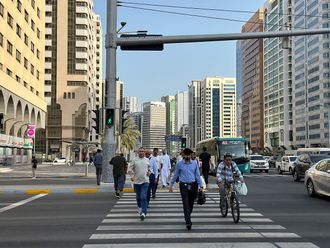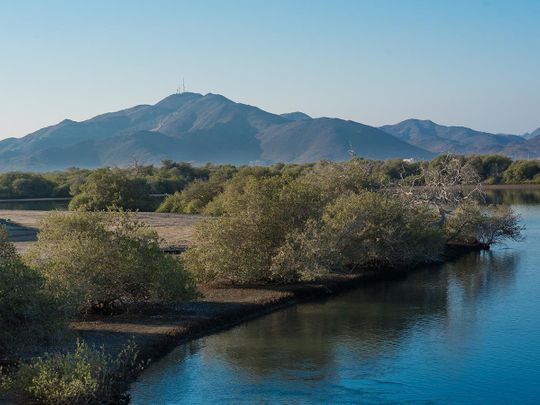
Dubai: If you are looking for travel choices that bring you closer to Nature and are easy on the pocket, the UAE has several options that you can consider. From mangroves to fossil dunes that are millions of years old, to discovering endangered species that are being rehabilitated in the UAE, here are all your options.
1. Al Marmoom Desert Conservation Reserve
The reserve is part of the larger Al Marmoom area and open to visitors. It houses the largest population of Arabian Oryx in Dubai. The area also has plenty of desert flora and fauna, which includes the Sand Gazelle (Reem in Arabic), Arabian Gazelle (Aldmani in Arabic) and a diverse range of bird and reptile species.
Dubai Municipality has built eight bird hides at the reserve for bird watching, which are mostly located near the lakes. You can view over 200 different migratory and local bird species that are present in Al Marmoom. If you want to catch a glimpse of the Arabian Oryx, there is an Oryx Platform, which is a viewing point near the Expo Lake in Al Marmoom.
Location:
Al Marmoom is only accessible by car, and you would need to do a little bit of off-roading if you wish to reach the popular spots like the Al Qudra lakes or the conservation reserve.
You can take any of the following roads in Dubai to get to the Al Marmoom desert area:
1. D63 Al Qudra Road – This road takes the visitors directly to the Al Qudra lakes.
2. E611 Emirates Road - The area will fall on your left, after you drive past the interchange crossing E77, in the direction of Dubai to Abu Dhabi.
3. E77 Jebel Ali Lehbab Road – The area will fall on your right, after you drive past the interchange crossing E611, in the direction of Dubai city centre, towards Expo.
4. E75 Al Fayah Road – The area will fall on your left, after you cross Exit 79, driving from Dubai city centre.
5. E66 Dubai Al Ain Road – The area will fall on your right, after you pass Dubai Rugby Sevens, in the direction of Dubai to Al Ain.
If you are using a navigation app, you can directly enter the coordinates for Al Marmoom, which are ‘R63X+5HV – Dubai’ for Al Marmoom Conservation Reserve or ‘R9V2+XMJ - Al Qudra Rd – Dubai’ for Al Qudra Lakes.
How to explore Al Marmoom
When you enter Al Marmoom, a trail with signs will guide your journey and show you directions to the lakes. Al Marmoom comprises of many lakes like Al Qudra Lake, Love Lake and Crescent Moon Lake, where you can set up a picnic or tent. However, you will need to drive off-road to access the lakes.
Timings:
Al Marmoom Desert Conservation Reserve is open all year round.
Cost: Free
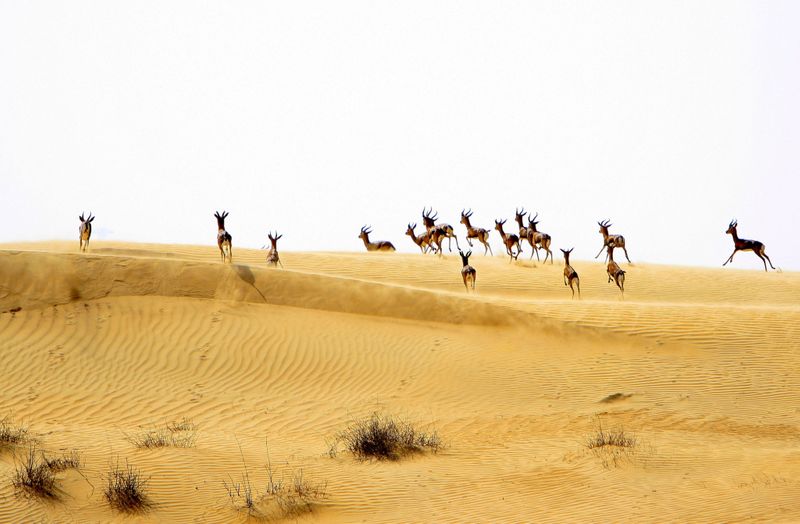
2. Ras al Khor Wildlife Sanctuary
The Ras Al Khor Wildlife Sanctuary is a famous viewing spot to watch migratory flamingoes. The sanctuary also hosts large populations of mallards, pintails, common teals, duck species, waders, shorebirds, songbirds and raptors.
Ras Al Khor is a wetland and it features a variety of salt flats, intertidal mudflats, mangroves and lagoons for the birds to use as their nests and individual habitats.
Dubai Municipality has built three bird hides at strategic locations to give visitors a closer view of birds and other wildlife in the area.
Cost: Free
Timings
From April to September, the sanctuary is open from 6am to 6pm.
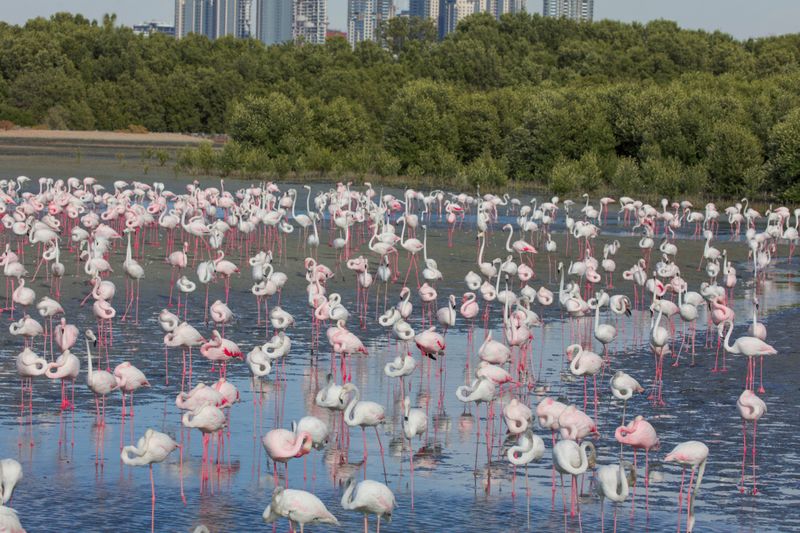
3. Al Wathba Fossil Dunes Protected Area
Just 45 minutes away from Abu Dhabi City are fossil dunes that are estimated to be over four million years old. Al Wathba Fossil Dunes Protected Area, comprises more than 1,700 fossil dunes, with a fluid shape, formed through interactions between wind force and sediment supply. It is spread over seven square kilometres, making it one of the largest numbers of fossil dunes concentrated in one location in the emirate.
How to explore the fossil dunes
When you enter the site, there is a Visitors’ Centre with viewing branches that allow visitors to look out at the formations in Al Wathba.
If you wish to get closer, you can follow a fenced trail into the protected area. A series of signposts will guide you through a well-lit seven-kilometre trail, which is also accessible at night.
In addition, food and beverage trucks are stationed at various points to serve visitors and several shaded seating areas are also available.
Location:
The Al Wathba Fossil Dunes are accessible from two inter-emirate roads - E30 (Abu Dhabi-Al Ain Truck Road) or E11 road (Sheikh Zayed Road). The closest landmark to the site is the Al Dhafra Air Base. It is advised to use a navigation app to find the exact location. On your app, enter the plus code - 5HCH+M6 Abu Dhabi, to get to the area.
How do I enter the area?
It is recommended to enter the area on a four-wheel drive and park outside. Entry to the site is free of charge, however, you must register your details at the entrance.
Cost: Free
Timings:
From 8am to 10pm
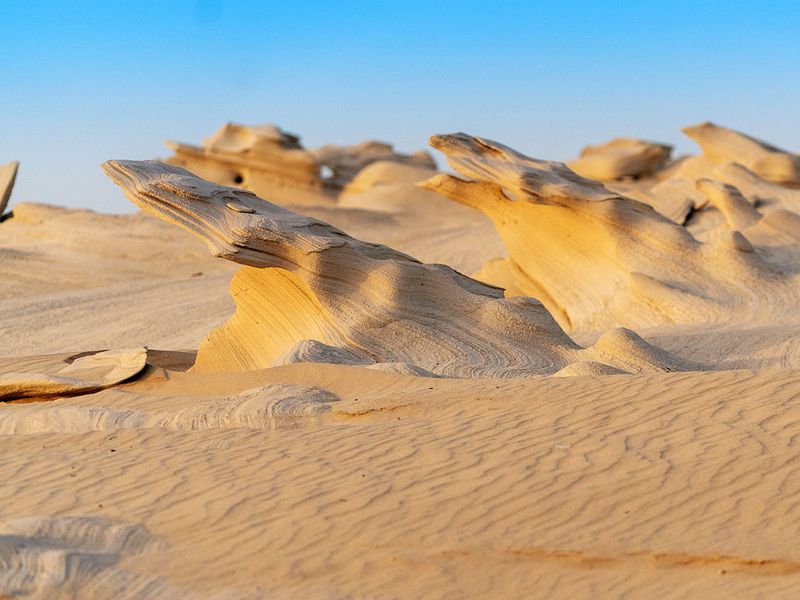
4. Jebel Hafeet National Park
According to Environment Agency – Abu Dhabi (EAD), Jebel Hafeet has more than 500 ancient burial tombs that have been discovered in its foothills dating back 5,000 years, marking the start of the Bronze Age in the UAE.
It is also home to some of the world’s most threatened wildlife, such as the Blandford’s Fox, Brandt’s Hedgehog, Arabian Tahr and the only concentration of the Egyptian Vulture in the UAE.
How to explore Jebel Hafeet:
The area is accessible by car, with the road winding around the mountain, all the way to the top.
Location:
Follow signs for Jebel Hafeet from Al Ain City. When you are on Malaqit Street (E40), take the exit for Hafeet Street. Reaching the peak will take you anywhere between 20 to 30 minutes.
Cost: Free
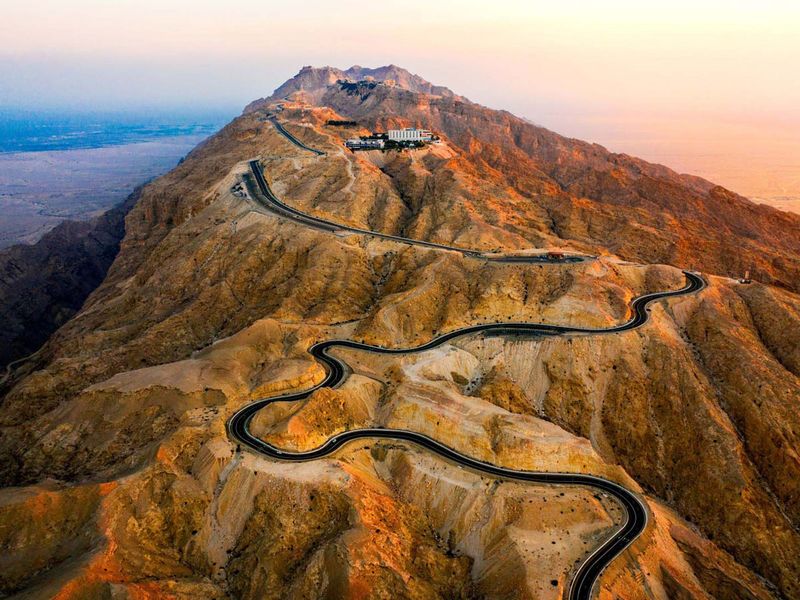
5. Eastern Mangrove National Park
The Eastern Mangrove National Park makes up almost 75 per cent of the total mangrove forest area in the UAE. This biodiversity hotspot includes salt marshes, mudflats, and algal communities.
How to explore Eastern Mangrove National Park
The national park is open 24 hours a day, seven days a week but the mangroves are easier to see during daylight hours.
You can take a walk on the trail, where you will be able to see the mangroves with a water channel snaking through the middle and might even spot the Greater Flamingo along with hundreds of other bird and plant species.
If you want to take a closer look, the area also offers kayak sessions, through private operators that cost between Dh160 to D200.
Cost: Free
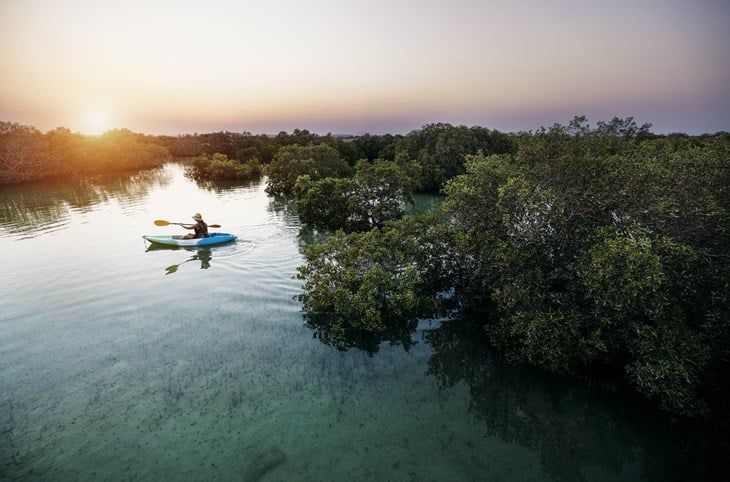
6. Sharjah Desert Park
At the Sharjah Desert Park, you can spot animals that are indigenous to the Arabian Peninsula, such as the Arabian Leopard or the gazelle, walk through an aviary, or visit a breeding centre where endangered animals are rehabilitated, and visitors also get to learn about animals that are on the brink of extinction. If you are visiting with children, the park also has a dedicated petting zoo, where they can spend time with farm animals and take pony and camel rides.
Location:
The park is located 30km east of Sharjah city along the Al Dhaid Highway (E88) before Interchange No. 9.
Cost:
Dh20 for adults, free for children under 12 years of age.
Timings:
• Monday to Thursday - 9am to 6.30pm.
• Friday – 2pm to 6.30pm.
• Saturday and Sunday - 11am to 6.30pm.
The park is closed on Tuesdays.
7. Khor Kalba Mangrove Centre
The Kalba Conservation Reserve, referred to as Khor Kalba, is spread over a large area offering many free and paid activities focused on reconnecting with Nature. The Mangrove Centre is part of this larger Reserve. At the centre, which was only opened last year to public, you will be able to walk through a part of the 300-year-old mangrove and spot oryxes in the area, or even find crustaceans, turtles, and birds during your walk along the mangrove trail.
A short drive away from the Mangrove Centre is the Kalba Bird of Prey Centre, which is an experience that falconry lovers can enjoy. You can also then drive down to the Al Hafiya Picnic Park, for a meal. According to visitsharjah.com, the area also offers enthusiasts a chance to kayak off the Kalba coast or pitch a tent near the water.
Location:
The Reserve is located on the east coast of Sharjah, around 90-minutes' drive from Sharjah city centre.
Cost:
Dh15 for adults and free for children under 12.
Timings:
• Sunday to Thursday - 9am to 6.30 pm
• Saturday - 11am to 6.30pm
• The centre is closed on Mondays
8. Al Qurm Nature Reserve
The mangroves - or qurm in Arabic - house rare bird species, sea turtles and mammals. Surrounded by an abundance of avian and aquatic life, you may spot the endangered Arabian-collared kingfishers flying over the mangroves, or hawksbill and green turtles nesting on the nearby beach.
If you are looking to upgrade your experience, the Reserve also offers luxury tents, kayaking and paddle board tours offered by private tour guides.
Location:
Inside Khor Kalba Mangroves along the coastal area of Kalba.
Cost: Free
9. Wadi Al Helo
Wadi Al Helo is an archaeological site located on the Sharjah-Kalba highway. Wadis (valleys) are popular among hiking enthusiasts in the UAE, and the most popular wadi in Sharjah is Wadi Al Helo, which means ‘sweet valley’ in Arabic, as it is blessed with abundant underground water.
The trail is an easy walk to the top of a hill, where an old fort provides a 360-degree view of the Hajar mountain range. It is recommended to take paid, guided hiking tours with friends and family, especially if you are not an experienced or professional trekker.
Location:
Near Wadi Al Helo Interchange on Sharjah-Kalba Road (E102)
Cost: Free
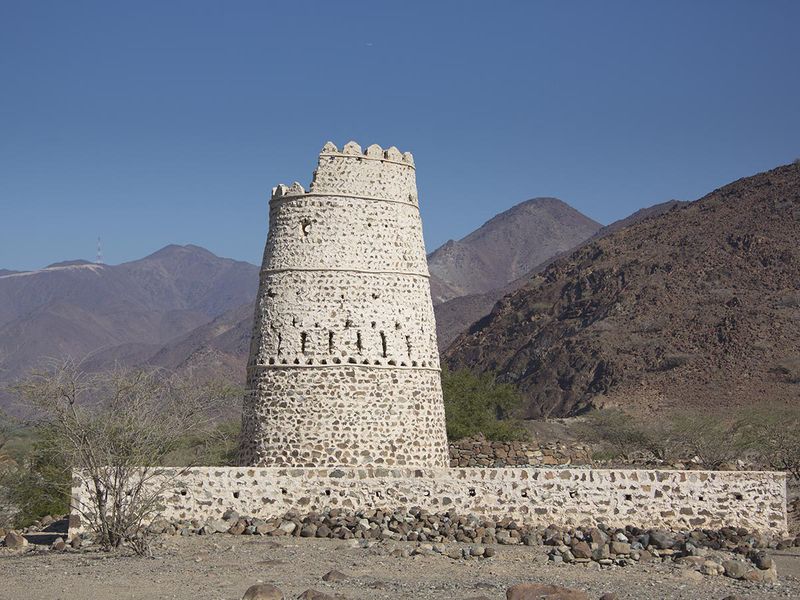
10. Wasit Nature Reserve
Located within Sharjah City, the Wasit Reserve gives visitors a chance to experience diverse ecosystems, from sand dunes and salt flats to ponds and a large lake. The Reserve is home to over 200 resident and migratory bird species, including the pink-backed pelican, flamingos, and marbled ducks. You can view the coastal bird populations from eight viewing decks and walk through the aviaries within the Reserve.
Location:
Sheikh Salem Bin Sultan Al Qasimi Street in the Al Homah area.
Cost:
Dh15 for adults, free for children under 12 years of age.
Timings:
• Sunday to Thursday - 9am to 6.30 pm.
• Fridays - 2pm to 6.30pm.
• The Reserve is closed on Tuesday



